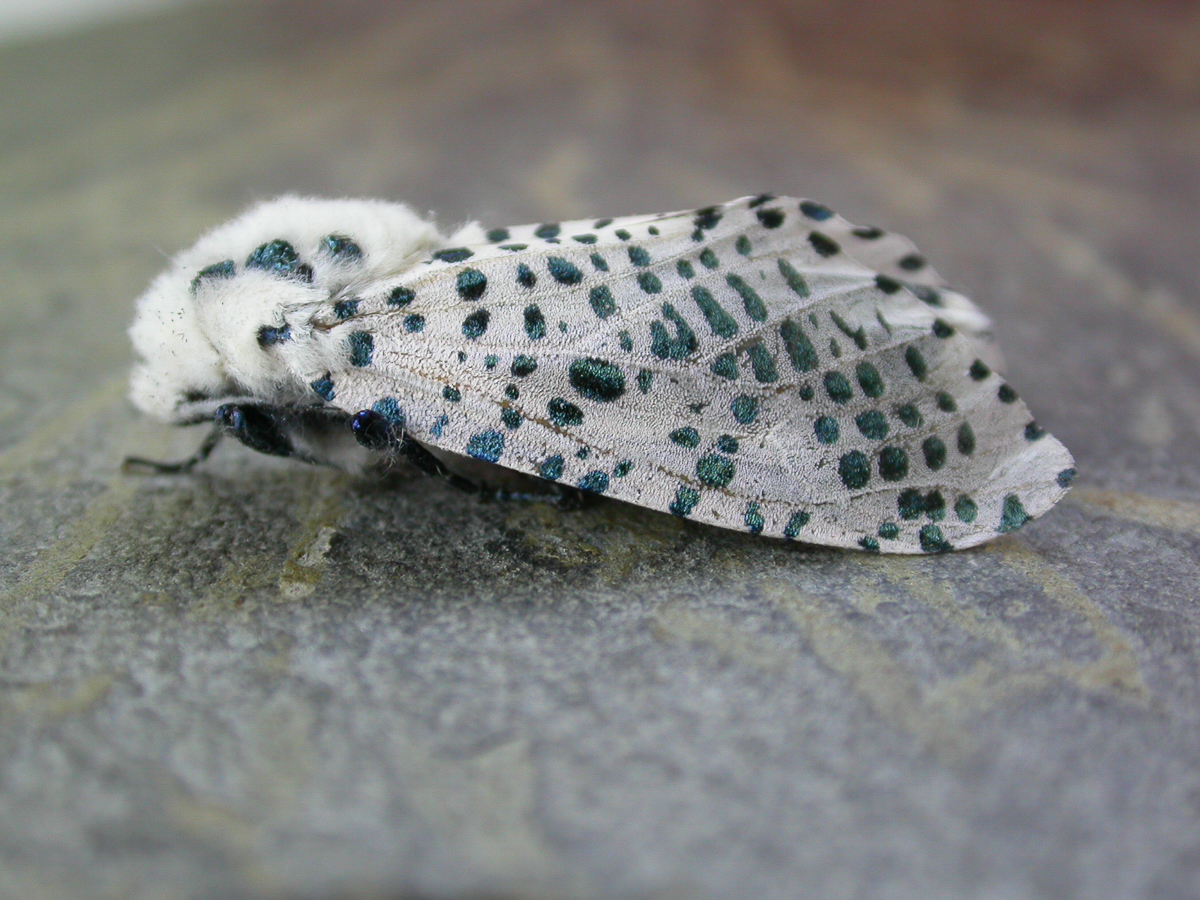
Photo © Andy Mitchell
Zeuzera pyrina, the leopard moth or wood leopard moth, is a moth of the family Cossidae.
It is considered a pest by fruit growers, as the larvae feed on branches of many kinds of fruit trees (see list below). Olive trees in particular are very susceptible and can be killed by the larvae burrowing within them.
Subspecies include:
Zeuzera biebingeri is treated as a subspecies of Z. pyrina by some sources, but is mostly treated as a valid species.
This species can be found primarily in Europe (excluding Ireland) but also in northern Africa (Algeria, Egypt, Libya, Morocco) and Asia (Taiwan, India, Iran, Iraq, Israel, Japan, Korea, Lebanon, Sri Lanka, Syria, Turkey). It was introduced into the northeastern United States prior to 1879 and has a range extending from Maine, Pennsylvania, Tennessee and Texas.
These moths are associated with woodland, gardens and orchards.
Zeuzera pyrina has a wingspan of 35–60 mm. This is a highly distinctive species. The male is slightly smaller than the female. The length of the abdomen of the female is about 45–50 mm. These moths have a white head, with a black forehead and a very furry white thorax marked with six black spots. The abdomen is black, with short white hair-like scales on the posterior edge of each segment and a flat brush of scales on the apex. Forewings are whitish, long and narrow, with numerous black spots or black spots with white interior spots, arranged in rows along the veins. Hindwings are translucent, except in the anal area, with small black spots. In addition to the dimensions, the two sexes differ in the shape of the antennas, thinner in the female, while in the male they are markedly bipectinate, with the exception of terminals articles.
The moth flies from June to September depending on the location. The caterpillars are xylophagous. They feed on the wood of various deciduous trees and shrubs (see list below), feeding internally for two or three years in the stems and branches before emerging to pupate under the bark. It can be a pest of fruit production.
Recorded food plants include:
Source: Wikipedia
The primary larval foodplants are Apple (Malus domestica), Ash (Fraxinus excelsior), Beech (Fagus sylvatica), birches (Betula spp.), Black Currant (Ribes nigrum), Blackthorn (Prunus spinosa), cherries (Prunus spp.), elms (Ulmus spp.), Hawthorn (Crataegus monogyna), Honeysuckle (Lonicera periclymenum), Horse-chestnut (Aesculus hippocastanum), Lilac (Syringa vulgaris), oaks (Quercus spp.), Pear (Pyrus communis), privets (Ligustrum spp.), Rowan (Sorbus aucuparia), Sycamore (Acer pseudoplatanus), Wayfaring-tree (Viburnum lantana) and willows (Salix spp.).